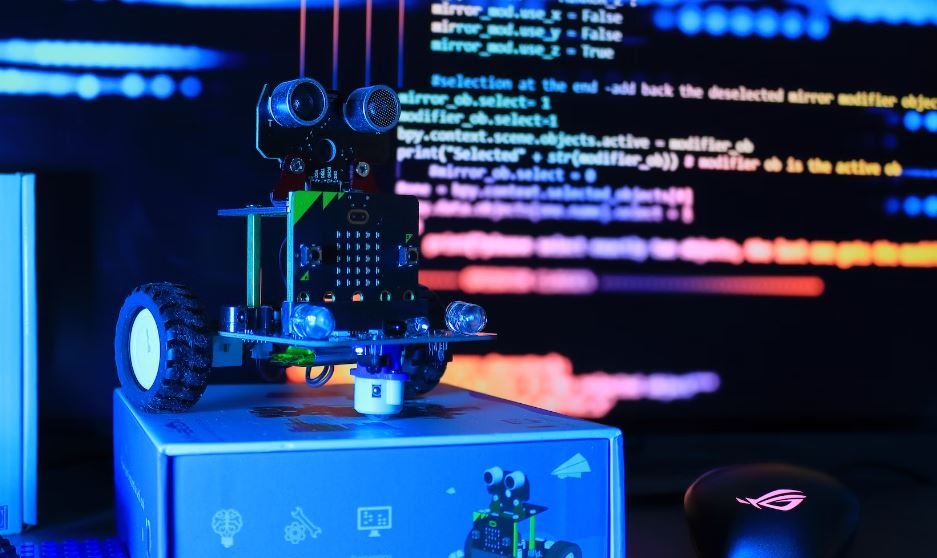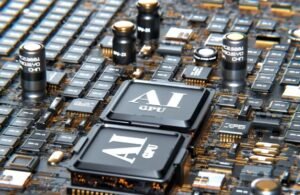What Is Group Model Building
Group Model Building is a process that involves a group of individuals coming together to collectively create a model or simulation of a complex problem or system. This collaborative approach allows participants to gain a deeper understanding of the issue at hand and develop effective strategies to address it.
Key Takeaways:
- Group Model Building involves a group of individuals working together to create a model of a complex problem.
- It provides a collaborative approach to problem-solving.
- Participants gain a deeper understanding of the problem and devise effective strategies to address it.
**Group Model Building** can be applied to a wide range of fields, such as business management, public policy, healthcare, and environmental sustainability. It is particularly useful when dealing with complex issues that require input from multiple stakeholders.
*For instance, in the field of public policy, Group Model Building can be used to address issues like urban planning or resource allocation, where multiple factors and variables need to be considered.*
The Group Model Building process typically consists of several steps:
- Problem Identification: The first step involves identifying the specific problem or issue that needs to be addressed. This can be done through research, data analysis, or stakeholder consultations.
- Data Collection: Once the problem is identified, relevant data and information are collected. This may include quantitative data, qualitative insights, or expert opinions.
- Model Development: Using the data collected, participants work together to develop a model or simulation. This involves creating a visual representation of the problem and its underlying factors.
- Model Testing and Refinement: The model is then tested and refined through feedback and input from the group. This iterative process helps improve the accuracy and effectiveness of the model.
- Strategy Development: Finally, based on the insights gained from the model, participants can devise strategies or solutions to address the problem at hand.
**Group Model Building** offers several benefits over traditional problem-solving approaches:
- Increased Collaboration: It promotes active participation and collaboration among group members, leading to a broader range of perspectives and ideas.
- Enhanced Understanding: By working collectively, participants gain a more comprehensive understanding of the problem and its underlying dynamics.
- Better Decision Making: The use of models and simulations helps facilitate informed decision-making by providing insights into the potential outcomes of different strategies.
| Group Model Building in Action | Benefits |
|---|---|
| Urban Planning | Improved community engagement and decision-making |
| Healthcare Management | Enhanced coordination among healthcare providers |
| Environmental Sustainability | Identification of effective strategies for conservation efforts |
By bringing together diverse perspectives and utilizing a systematic approach to problem-solving, Group Model Building can lead to more effective and sustainable solutions.
| Benefits of Group Model Building | Challenges |
|---|---|
| Enhanced collaboration | Time-consuming process |
| Better understanding of complex problems | Requires skilled facilitation |
| Informed decision-making | Resolving conflicts and differing opinions |
*One interesting aspect of Group Model Building is that it empowers participants to actively contribute to finding solutions rather than relying solely on experts or leaders.*
In conclusion, Group Model Building is a collaborative approach to problem-solving that involves a group of individuals working together to create a model or simulation of a complex problem or system. Through active participation and the use of models, participants gain a deeper understanding and are able to develop effective strategies to address the problem at hand.

Common Misconceptions
Misconception 1: Group Model Building is only for large organizations
One common misconception is that Group Model Building (GMB) is only applicable to large organizations and not relevant for small businesses or individuals. However, GMB can be beneficial for organizations of any size.
- GMB can improve decision-making processes for small businesses.
- It can help individuals gain a deeper understanding of complex problems.
- GMB can be used in a variety of settings, including community groups and non-profit organizations.
Misconception 2: Group Model Building is time-consuming and complex
Another misconception is that GMB requires a significant amount of time and expertise to implement, making it impractical for most organizations. While GMB does demand an investment of time and effort, it is not necessarily a complex or time-consuming process.
- GMB can be tailored to fit the specific needs and resources of the organization.
- With the right facilitation and guidance, GMB sessions can be kept focused and efficient.
- There are available tools and methodologies that simplify the GMB process.
Misconception 3: Group Model Building always leads to consensus
It is often assumed that the primary goal of GMB is to achieve consensus among participants. However, this is not always the case. GMB fosters collaboration and collective understanding but does not necessarily require everyone to agree on a specific solution or outcome.
- GMB allows for multiple perspectives and promotes dialogue among participants.
- Conflict and disagreement can be valuable in the GMB process, leading to creative solutions.
- GMB can help identify common goals and shared interests rather than focusing solely on individual preferences.
Misconception 4: Group Model Building is only used in problem-solving
Some may believe that GMB is solely used for problem-solving situations and overlook its potential in other areas. While GMB is commonly employed to address complex problems, it can also be utilized in various contexts to support decision-making, strategic planning, and organizational learning.
- GMB can enhance collaboration and teamwork within an organization.
- It can aid in identifying and exploring opportunities for improvement.
- GMB can augment knowledge sharing and organizational learning processes.
Misconception 5: Group Model Building is only effective in face-to-face settings
There is a misconception that GMB can only be effectively carried out in face-to-face settings, limiting its application in remote or virtual environments. However, advancements in technology and the availability of virtual collaboration tools have made it possible to conduct GMB remotely.
- Virtual GMB sessions can leverage video conferencing and online collaboration platforms.
- Remote GMB allows for participation from geographically dispersed individuals or teams.
- The use of virtual tools can enhance data sharing and visualization in GMB sessions.

Overview of Group Model Building
Group Model Building is a collaborative decision-making process aimed at addressing complex problems. It involves gathering a diverse group of individuals to collectively build system dynamics models that help understand the issue at hand and identify potential solutions. The following tables present various aspects and examples of Group Model Building in action.
Benefits of Group Model Building
Group Model Building offers several advantages, including enhanced problem-solving capabilities, increased stakeholder engagement, and improved decision-making processes. The table below highlights some key benefits.
| Benefits | Description |
|---|---|
| Increased creativity | Group collaboration fosters the exchange of diverse ideas and perspectives, leading to innovative solutions. |
| Enhanced understanding | Modeling complex systems together helps participants develop a shared comprehension of the problem. |
| Greater ownership | Because participants co-create the models, they develop a sense of ownership and commitment to the solution. |
| Improved stakeholder engagement | Group discussions facilitate active participation from stakeholders, eliciting valuable insights and promoting collaboration. |
Applications of Group Model Building
Group Model Building finds application in a wide range of domains. The following table showcases different areas where this approach has proven effective.
| Domain | Examples |
|---|---|
| Public policy | Addressing climate change, designing healthcare systems |
| Business management | Strategic planning, risk assessment |
| Community development | Urban planning, poverty alleviation |
| Environmental sustainability | Water resource management, biodiversity conservation |
Group Model Building Process
The Group Model Building process is a structured approach that involves several key steps. The table below provides an overview of these steps and their significance.
| Step | Description |
|---|---|
| Problem scoping | Clearly defining the problem and establishing the scope and boundaries of the model. |
| Data collection | Gathering relevant data and information to inform the model. |
| Model construction | Building the system dynamics model based on the collected data and group discussions. |
| Assumptions validation | Reviewing and validating the assumptions made in the model to ensure accuracy. |
| Scenario analysis | Exploring various scenarios and their potential impacts on the system, aiding decision-making. |
Success Stories of Group Model Building
Group Model Building has been successfully applied in various contexts, leading to significant outcomes. The following table showcases a few notable success stories.
| Application | Result |
|---|---|
| Community revitalization | An economically struggling town witnessed a revitalization by identifying and implementing strategies to attract new businesses and stimulate local employment. |
| Natural resource management | Through collaboration among different stakeholders, a watershed faced with pollution issues developed a plan to restore water quality and preserve ecosystems. |
| Healthcare system improvement | A hospital successfully redesigned its patient flow processes, significantly reducing waiting times and improving overall quality of care. |
Factors Influencing Group Model Building Success
Several factors contribute to the successful implementation of Group Model Building. The following table highlights some critical elements to consider.
| Factors | Description |
|---|---|
| Facilitator expertise | Having a skilled facilitator who can guide the process and ensure effective participation and communication among the group members. |
| Clear objectives | Establishing clear goals and objectives helps focus the group’s efforts and ensures a targeted approach. |
| Diverse participant composition | Ensuring that participants come from diverse backgrounds and possess various perspectives ensures a comprehensive exploration of the problem. |
| Effective communication | Promoting open and respectful communication among participants is crucial for exchanging ideas and building shared understanding. |
Potential Challenges in Group Model Building
While Group Model Building offers numerous benefits, certain challenges may arise during the process. The table below outlines some common hurdles that need to be addressed.
| Challenges | Description |
|---|---|
| Time constraints | Building models collaboratively requires sufficient time for discussion, analysis, and consensus-building, which may pose constraints in fast-paced environments. |
| Conflict resolution | When a diverse group of individuals participates, conflicts may arise. Having mechanisms in place to address conflicts constructively is essential. |
| Data availability | Availability and accessibility of relevant data can present challenges, especially in cases where data collection or sharing is limited. |
Group Model Building vs. Individual Decision-Making
Comparing Group Model Building with traditional individual decision-making provides insights into its unique advantages. The table below highlights the differences.
| Decision-Making Approach | Distinguishing Factors |
|---|---|
| Individual Decision-Making | Relies on the perspectives, knowledge, and experiences of a single person. |
| Group Model Building | Incorporates diverse perspectives, fosters collaboration, and generates a collective understanding of the problem. |
Conclusion
Group Model Building is a powerful approach that fosters collaboration, engages stakeholders, and improves decision-making processes. Its benefits range from increased creativity to enhanced stakeholder engagement. By leveraging the collective knowledge and diverse perspectives of participants, Group Model Building enables the understanding and resolution of complex problems. Although it may face challenges such as time constraints and conflicts, successful implementations have demonstrated its effectiveness across domains. Group Model Building stands as a valuable tool for addressing complex problems and generating innovative solutions through collective effort.
Frequently Asked Questions
What is group model building?
What is group model building?
Group Model Building (GMB), also known as group model development or interactive planning, is a collaborative problem-solving approach that involves a group of stakeholders working together to develop a mathematical or computational model to address complex problems or make decisions. It utilizes structured facilitation techniques to encourage effective communication and consensus-building among participants.
What are the benefits of group model building?
What are the benefits of group model building?
Group Model Building offers several benefits including:
– Enhanced communication and collaboration among stakeholders.
– Improved understanding of complex problems through shared knowledge and perspectives.
– Creation of a shared mental model among participants.
– Increased trust and commitment to the decisions made.
– Potential for innovative and creative solutions.
– Utilization of diverse expertise and insights.
– Reduction of conflict and resistance to change.
– Increased ownership and buy-in from participants.
How does group model building work?
How does group model building work?
Group Model Building typically follows a structured process that includes the following steps:
1. Problem identification and scoping: Clearly defining the problem or decision to be addressed by the group.
2. Stakeholder engagement: Identifying and involving relevant stakeholders who have a vested interest in the problem or decision.
3. Data collection and analysis: Gathering and analyzing relevant data and information to inform the model development.
4. Model development: Collaboratively developing a mathematical or computational model that represents the problem or decision.
5. Sensitivity analysis and exploration: Testing the model under different scenarios and exploring the potential impacts of various variables.
6. Decision-making and action planning: Using the model outputs to support decision-making and developing an action plan for implementation.
7. Monitoring and evaluation: Continuously monitoring and evaluating the implemented actions and adjusting the model if necessary.




